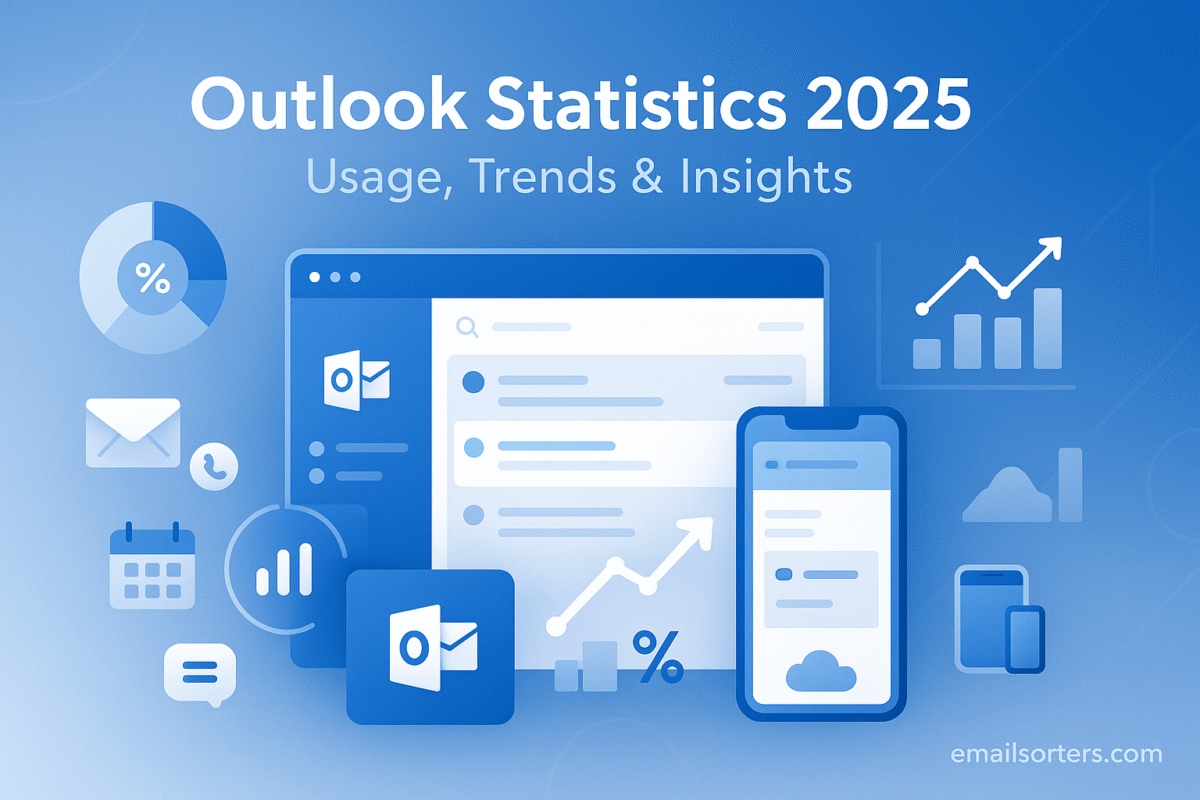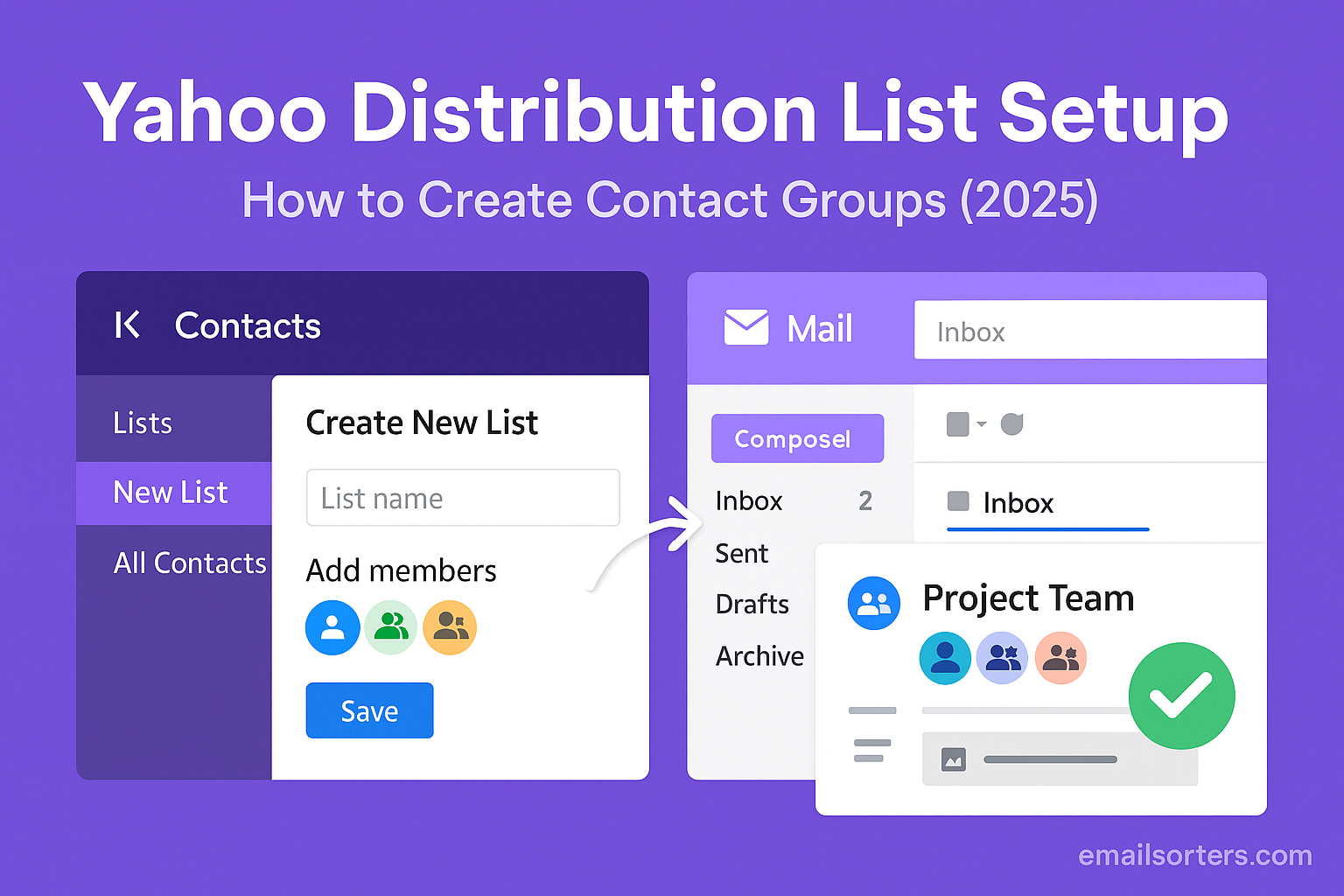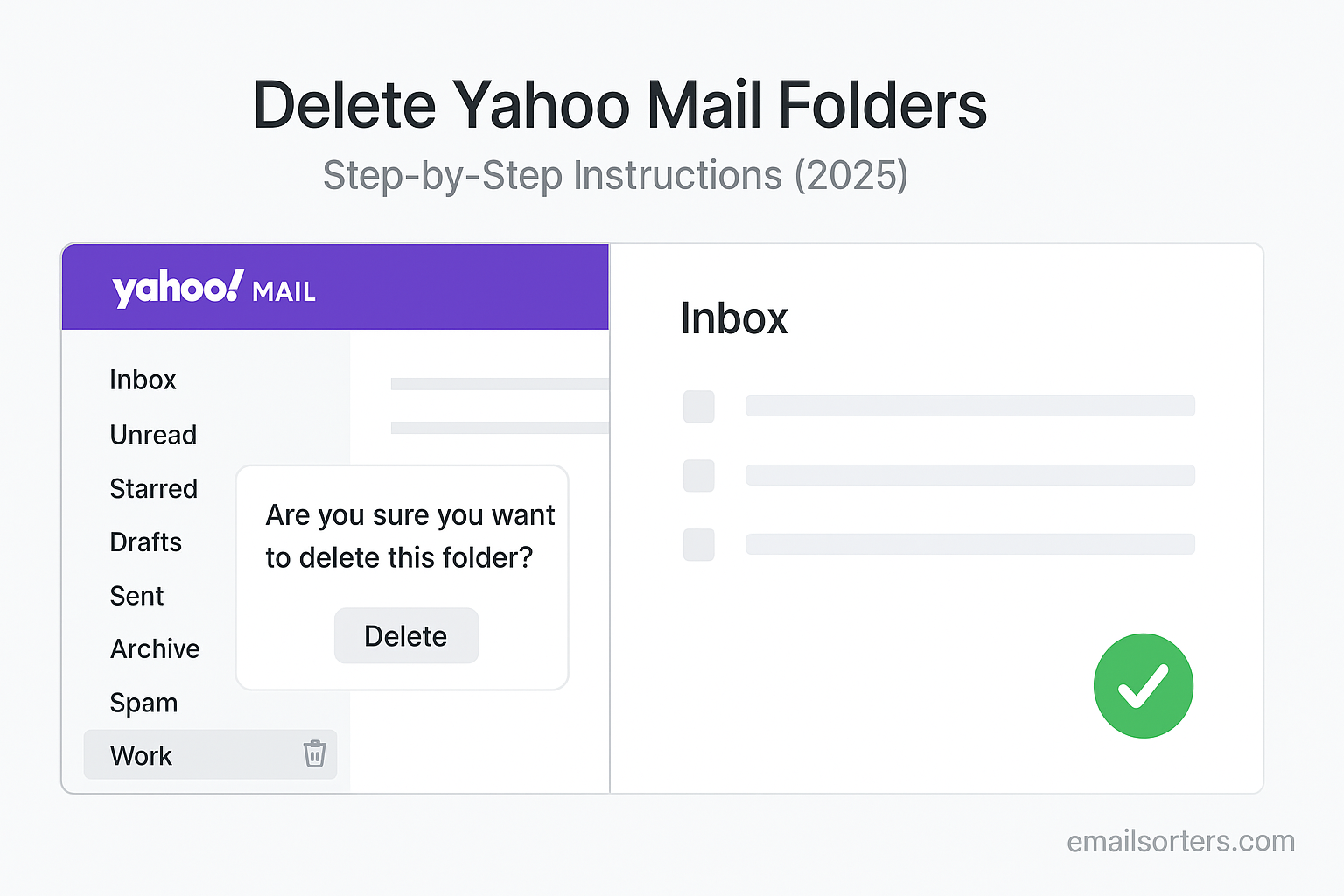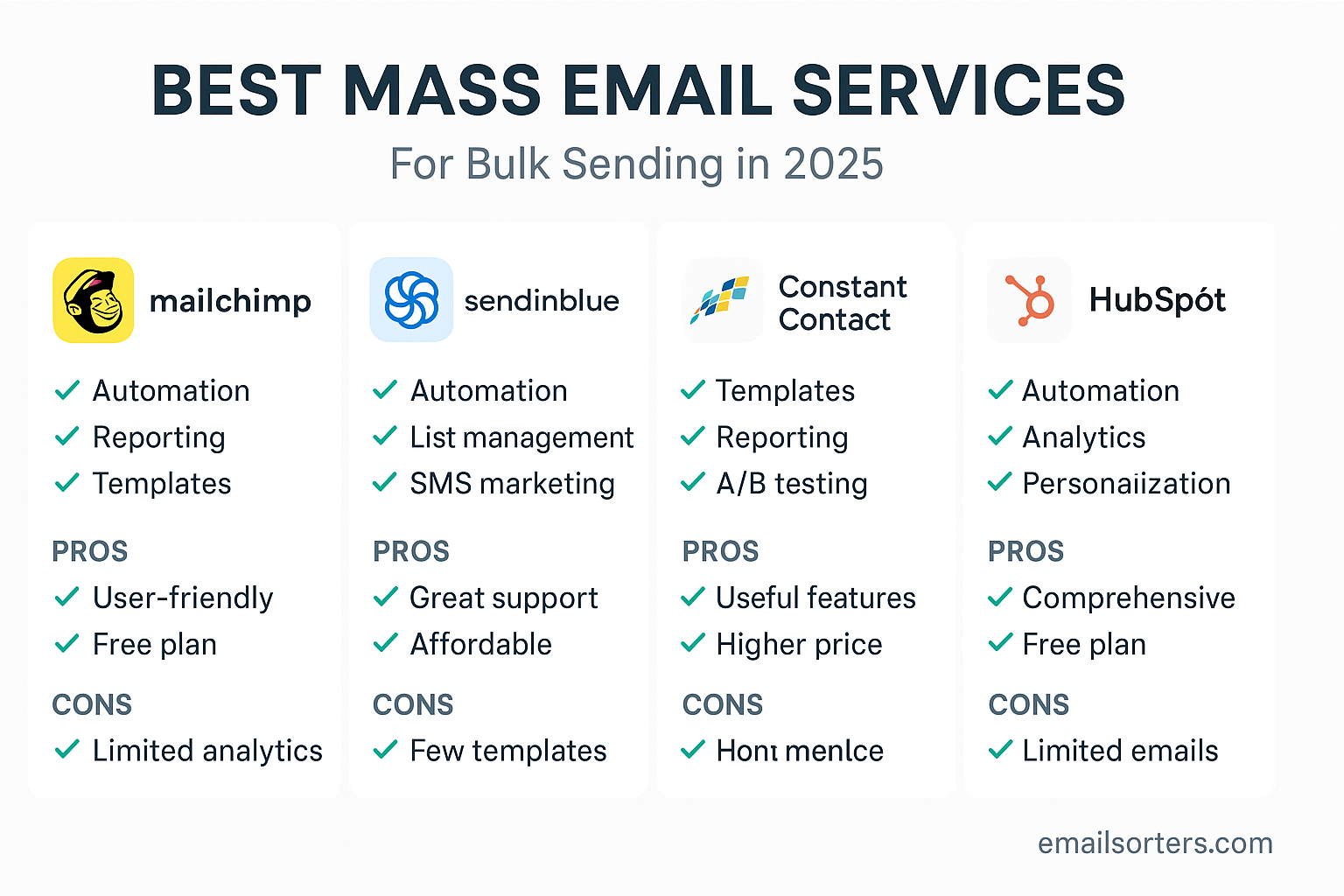With over 400 million active users for its free webmail service alone, Microsoft Outlook Statistics is a true giant in the world of digital communication. But that number only tells a small part of the story. Outlook is a complex and powerful ecosystem, ranging from the free and accessible Outlook.com to its role as the professional heart of the massive Microsoft 365 subscription service.
The statistics for Outlook in 2025 paint a picture of a platform that has successfully evolved. It has transformed from an early webmail pioneer into a dominant force in the business and productivity landscape. This guide will break down the key statistics to show you how and why Outlook remains an essential tool for hundreds of millions of users around the world.
The Two Worlds of Outlook Statistics: Understanding the Numbers
To understand Outlook’s statistics, you must first understand that “Outlook” refers to two very different, though related, user groups. Confusing these two groups is the most common mistake when looking at the numbers.
The Consumer Base: Outlook.com
This is the free webmail service that anyone can sign up for. Built on the legacy of Hotmail, Outlook.com is a modern and full-featured email platform.
- Active Users: Outlook.com has over 400 million active personal users. This makes it one of the largest free webmail services on the planet.
- Global Reach: This massive user base gives it a truly global footprint, with a long and loyal following that has used the service for decades.
The Professional Powerhouse: Microsoft 365
This is the paid subscription service (formerly known as Office 365) that is a standard in the business world.
- Consumer Subscribers: The consumer version, Microsoft 365 Personal and Family, has over 75 million subscribers.
- Commercial Users: While Microsoft does not give an exact number, there are hundreds of millions of commercial seats for Microsoft 365. For nearly every one of these users, the Outlook desktop application is their primary communication tool.
This professional user base is where Outlook’s true dominance lies.
Outlook’s Market Share in a Competitive Landscape
Market share statistics help us understand how many people are actively using an Outlook application to read their email, regardless of their email provider.
Email Client Market Share: A Solid Position
When looking at where emails are opened, Outlook consistently holds a top-three position globally. Its email client market share is approximately 10%. This means that one out of every ten emails opened in the world is opened in an Outlook application, whether on the desktop or a mobile device.
Desktop vs. Mobile Usage Trends
While the overall trend in email is a shift towards mobile, Outlook’s statistics tell a more nuanced story. A huge percentage of its usage, especially in the business world, still happens on the Outlook desktop client. This is because the desktop version offers a level of power, control, and integration that is essential for many professional workflows. Its mobile apps are also highly rated and popular, but the desktop client remains its powerhouse.
How Outlook Stacks Up Against Competitors
Outlook’s main competitors for market share are Apple’s Mail apps (which are the default on every iPhone and Mac) and Google’s Gmail. Outlook has successfully maintained its strong position against these giants, particularly within its core audience of business and enterprise users.
Deep Dive: The Microsoft 365 Ecosystem Statistics
The story of Outlook’s success is deeply connected to the success of the broader Microsoft 365 ecosystem.
The Engine of Modern Business
The adoption of Microsoft 365 by businesses of all sizes continues to grow at an impressive rate. For the hundreds of millions of people who use Microsoft 365 for work, Outlook is not just an email app; it is their command center. It is where their meetings are scheduled, their contacts are managed, and their daily communications happen.
Integration as a Key Driver
The statistics show that the deep integration between Outlook and other Microsoft services is a key reason for its high adoption rate. The ability to seamlessly schedule a Teams meeting from the calendar, save a file directly to OneDrive, or collaborate on a Word document without leaving the inbox creates a powerful and efficient workflow that keeps users inside the ecosystem.
The “Stickiness” of the Ecosystem
The data also reveals that the Microsoft 365 ecosystem is very “sticky.” This means that once a company or an individual adopts the platform and integrates it into their daily workflow, they are very likely to continue using it for the long term. This solidifies Outlook’s stable and predictable position in the market for years to come.
User Behavior and Productivity Insights
The statistics also give us a glimpse into how people use Outlook and the challenges they face.
The Challenge of Junk Mail
With a massive user base, Outlook is a huge target for spam and phishing attacks. The constant need to manage unwanted messages is a primary concern for users. This has made learning how to stop junk emails in Outlook an essential skill for maintaining a clean and secure inbox.
The Need for Speed and Organization
The professional audience that uses Outlook demands an efficient and responsive experience. An inbox with tens of thousands of messages and a bloated data file can slow the application down. This is why many users seek out ways to speed up Outlook. Many power users also find that customizing their interface, for example by using the Outlook classic view, helps them manage information more effectively.
Inbox Management Trends
The high volume of professional email has created a need for advanced management tools. The trend of “inbox zero” and other productivity methods has grown in popularity among Outlook users. This has also led to the rise of third-party services that help with this challenge. Tools from companies like Clean Email, for example, are designed to connect to Outlook to help users bulk-process and organize their mail more efficiently.
Outlook in the Broader Webmail Context
Outlook’s journey from Hotmail to a professional powerhouse is a key story in the history of the internet.
A Look at the Legacy Providers
Outlook’s evolution can be compared to that of other long-standing email services. A look at an AOL Mail overview or a Yahoo Mail overview shows how these classic brands have also adapted to the modern era, though each has found a different niche in the market.
A Summary of Key Outlook Statistics for 2025
This list provides a scannable overview of the most important figures that define Outlook’s position in the market today.
Outlook by the Numbers
These key statistics offer a snapshot of Outlook’s impressive scale and its core strength in the professional world.
- Active Outlook.com Users: Over 400 Million
- Microsoft 365 Consumer Subscribers: Over 75 Million (based on the latest available data)
- Microsoft 365 Commercial Users: Hundreds of Millions globally
- Email Client Market Share: Approximately 10%
- Free Mailbox Storage (Outlook.com): 15 Gigabytes
- Primary Audience: A strong and clear dominance in the business, enterprise, and professional sectors.
Frequently Asked Questions (FAQ)
Here are detailed answers to some of the most common questions users have about Outlook’s statistics and its place in the market.
1. How many people still use Hotmail?
The answer is that hundreds of millions of people still have and use their Hotmail addresses. However, it is important to understand that “Hotmail” is now a part of the Outlook.com brand. All @hotmail.com, @live.com, and @msn.com email addresses are now powered by the modern Outlook.com infrastructure. So, while the email address itself might be a classic Hotmail one, the service they are using is the current version of Outlook on the Web.
2. Is Outlook growing or shrinking?
This is a nuanced question. If you look only at the desktop client market share, some data shows a slight decline as the world continues to shift towards web and mobile email. However, if you look at the total number of Outlook users, the ecosystem is growing strongly. This growth is driven almost entirely by the massive and continuing adoption of Microsoft 365 subscriptions by both businesses and consumers.
3. Which age group uses Outlook the most?
The demographics for the free Outlook.com service are very broad and span all age groups. However, the core user base for the paid Microsoft 365 product, which includes the powerful Outlook desktop client, trends strongly towards working-age adults. Its deep roots in the corporate world for the last few decades mean it has a very powerful presence among professionals in the 25 to 60 age range.
4. How does Outlook make money if the web version is free?
Microsoft uses a classic “freemium” business model. The free Outlook.com service is excellent and attracts hundreds of millions of users. This service acts as an entry point to the broader Microsoft ecosystem. The primary way Microsoft makes money from this ecosystem is by selling Microsoft 365 subscriptions. They convert free users into paying customers who want more storage, the powerful desktop applications (like Word, Excel, and Outlook), and advanced security features for their families and businesses.
5. What do the statistics say about the “New Outlook for Windows”?
As of 2025, official adoption statistics for the “New Outlook” are still emerging. The data shows that Microsoft is heavily encouraging and, in some cases, automatically migrating users to this new, web-based client. The long-term strategy is clearly to unify all Windows users on this single platform. However, user feedback remains mixed. While many casual users like the modern design, a significant number of power users and business professionals continue to prefer the classic desktop version due to its richer feature set.




